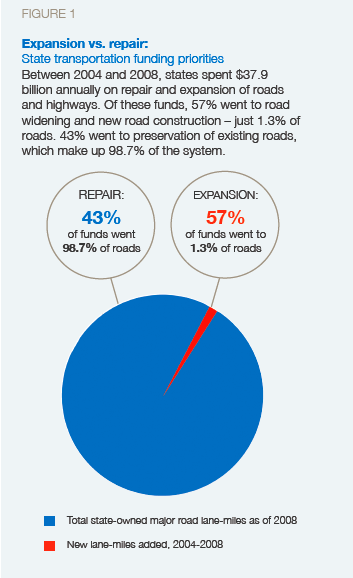America’s infrastructure has a problem. That seems to be the only thing everyone can agree on anymore. But ask how to fix the problem, or pay for the fixes, and you simply open another front in the ongoing war between, well, any two groups on the American stage.
The basic need is clear. Sen. Bernie Sanders (I-VT) recently introduced a bill to increase federal infrastructure spending by $1 trillion over five years. High profile columnist/economists like Paul Krugman have pushed for a massive spend, due to the low cost of borrowing at current rock bottom interest rates. President Obama called for increased attention to the infrastructure crisis in his 2015 State of the Union address. Even the Chamber of Commerce, not traditionally an Obama ally, has called stridently for a program to jumpstart infrastructure.
Related: Why a $1 Trillion D.C. Spending Spree Is Just What America Needs
With everyone in agreement, the next step should be easy. Let’s spend more money on infrastructure.
How? That’s where the consensus crumbles, if you will. Where should the money go? The dangerous bridges? The clogged and potholed roads? Aging and crowded transit (that only really serves the big Eastern cities)?
“Infrastructure” sounds like a monolith that can be easily propped up with cash, but is really more like a game of Jenga. Remove one block and replace it, you’re probably fine. The second block gets trickier. And then suddenly -- collapse.
Related: How Big Cities Mine Big Data to Solve Big Problems
You have to start somewhere, though, and the most used American infrastructure is our decrepit roadways. The Federal Highway Administration estimates that it would require $170 billion annually to significantly improve our roads. But between 2009 and 2011, only $16.5 billion was spent by states on repairs.
That compares to $20.4 billion spent on building new roads and adding lanes to existing ones. According to Smart Growth America, a non-profit group advocating for pedestrian-friendly urban development, these new roads account for only 1.3 percent of the total roadways in America.
Related: The 10 Most Livable Cities in America
 Overall, 98.7 percent of roads get 43 percent of the spending, while the newly built 1.3 percent of roads get 57 percent. As Angie Shmitt pointed out on Streetsblog USA, the math just doesn’t work there.
Overall, 98.7 percent of roads get 43 percent of the spending, while the newly built 1.3 percent of roads get 57 percent. As Angie Shmitt pointed out on Streetsblog USA, the math just doesn’t work there.
Calling for more infrastructure spending sounds great, and makes an easy sound bite, but without a coherent plan and sense of priorities, all the money in the world won’t fix what ails America’s roads.
Top Reads from The Fiscal Times:
